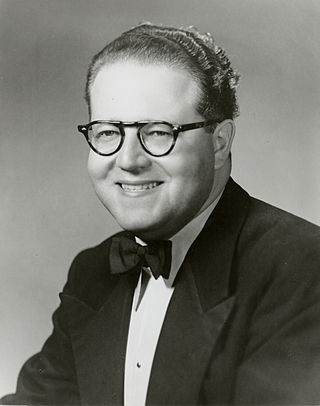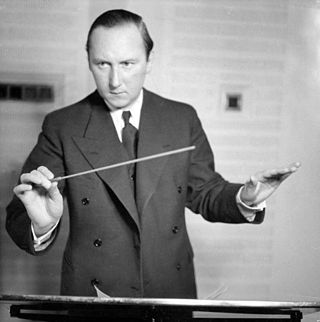
James Charles Barnes (born September 9, 1949 in Hobart, Oklahoma, U.S.) is an American composer. [1]

James Charles Barnes (born September 9, 1949 in Hobart, Oklahoma, U.S.) is an American composer. [1]
Barnes studied composition and music theory at the University of Kansas, earning a Bachelor of Music in 1974, and Master of Music in 1975. He studied conducting privately with Zuohuang Chen. In 1977 he joined the faculty at the University of Kansas as professor of music theory and composition. He retired in August 2015, but retains his emeritus status at KU. [2]
Barnes is also a tubist and has performed with numerous professional organizations in the United States. [1]
His numerous compositions are frequently played in America, Europe, Japan, Taiwan and Australia. The Japanese concert band Tokyo Kosei Wind Orchestra has produced 3 CDs to date with works of James Barnes.
He has twice received the American Bandmasters Association Ostwald Award for contemporary wind band music. [3] [4] [5]

A symphony is an extended musical composition in Western classical music, most often for orchestra. Although the term has had many meanings from its origins in the ancient Greek era, by the late 18th century the word had taken on the meaning common today: a work usually consisting of multiple distinct sections or movements, often four, with the first movement in sonata form. Symphonies are almost always scored for an orchestra consisting of a string section, brass, woodwind, and percussion instruments which altogether number about 30 to 100 musicians. Symphonies are notated in a musical score, which contains all the instrument parts. Orchestral musicians play from parts which contain just the notated music for their own instrument. Some symphonies also contain vocal parts.

Robert Eugene Ward was an American composer who is best remembered for his opera The Crucible (1961) after the 1953 play of the same name by Arthur Miller. He was awarded the Pulitzer Prize for Music for that opera in 1962.

Alfred Friedman was an American neoclassical composer, with more than two hundred published works for concert band, orchestra, chorus, and chamber ensemble to his name. He also traveled extensively as a guest conductor, performing in North America, Latin America, Europe and Asia.

Ludwig van Beethoven's Symphony No. 1 in C major, Op. 21, was dedicated to Baron Gottfried van Swieten, an early patron of the composer. The piece was published in 1801 by Hoffmeister & Kühnel of Leipzig. It is not known exactly when Beethoven finished writing this work, but sketches of the finale were found to be from 1795.
John Barnes Chance was an American composer. Chance studied composition with Clifton Williams at the University of Texas, Austin, and is best known for his concert band works, which include Variations on a Korean Folk Song, Incantation and Dance, and Blue Lake Overture.
Václav Nelhýbel was a Czech American composer, mainly of works for student performers.
[James] Clifton Williams, Jr. was an American composer, pianist, French hornist, mellophonist, music theorist, conductor, and teacher. Williams was known by symphony patrons as a virtuoso French hornist with the symphony orchestras of Baton Rouge, New Orleans, Houston, Oklahoma City, Austin, and San Antonio. The young composer was honored with performances of Peace, A Tone Poem and A Southwestern Overture by the Houston and Oklahoma City symphony orchestras, respectively. He remains widely known as one of America's accomplished composers for the wind ensemble and band repertory.
On two occasions, Felix Mendelssohn composed music for William Shakespeare's play A Midsummer Night's Dream. First in 1826, near the start of his career, he wrote a concert overture. Later, in 1842, only a few years before his death, he wrote incidental music for a production of the play, into which he incorporated the existing overture. The incidental music includes the famous "Wedding March".
David Rex Holsinger is an American composer and conductor writing primarily for concert band. Holsinger is a graduate of Hardin-Central High School in Hardin, Missouri, Central Methodist University, the University of Central Missouri, and the University of Kansas.

The Symphony No. 3 in C major, Op. 52, is a three-movement work for orchestra written from 1904 to 1907 by the Finnish composer Jean Sibelius.
Paul William Whear was an American composer, conductor, music educator, and double-bassist.
Robert Edward Jager is an American composer, music theorist and a conductor.

Edwin Henry Lemare was an English organist and composer who lived the latter part of his life in the United States. He was one of the most highly regarded and highly paid organists of his generation, as well as the greatest performer and one of the most important composers of the late Romantic English-American Organ School.

The Piano Trio No. 2 in C minor, Op. 66, was written by Felix Mendelssohn in 1845 and published in February 1846. The work is scored for a standard piano trio consisting of violin, cello and piano. Mendelssohn dedicated the work to his close friend and violinist, Louis Spohr, who played through the piece with the composer at least once.
William Brocklesby Wordsworth was an English composer. His works, which number over 100, were tonal and romantic in style in the widest sense and include eight symphonies and six string quartets.
Arthur Eckersley Butterworth, was an English composer, conductor, trumpeter and teacher.

Joseph Willcox Jenkins was an American composer, professor of music, and musician. During his military service in the Korean War, he became the first arranger for the United States Army Chorus. He ended his teaching career as Professor Emeritus at the Mary Pappert School of Music, Duquesne University, where he had been a professor since 1961, and composed over 200 works.
Jared Tozier Spears is an American composer and music teacher.

The Symphony No. 3 in C minor, Op. 34, is a four-movement orchestral composition written from 1944 to 1945 by the Swedish composer Lars-Erik Larsson. The piece premiered in Stockholm on 10 February 1946 with Tor Mann conducting the Concert Society Orchestra. In response to unfavorable critical reviews, Larsson immediately withdrew the symphony after its premiere—a fate that, too, had earlier befallen his First and Second symphonies.